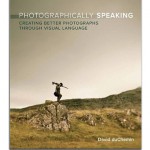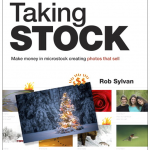Taking Stock and Photographically Speaking
“I don’t think you should be reading that book here.” My Supervisor says when he sees the picture of Buddha on the cover. “It might offend someone.”
“Really?” I say and turn the book around so he can read the title which says Confessions of An Atheist Buddhist. “We’re in a Baptist church, how many Buddhists or Atheists am I likely to offend?”
Over the years I have read all manner of books while I have been working. The topics have covered a wide range of passing and enduring interests. Murder mysteries, science fiction, and memoirs have been the most common themes, but just about any topic might strike my fancy. The Atheist Buddhist book was pretty damned cool.
My recent reading has lead me to the slightly more practical side, though anyone who knows me will realize that I am never all that practical. Still, it is good to think about the future, even for those of us who kind of drift into it and hope for the best.
As a photographer I have tried my hand at a few different photographic styles. Not all have been successful, but I like to think that a few of my images are great. I could tell myself they were at least ‘good.’ That is until I tried to submit a few of them to a Microstock Agency, where 80 out of a 100 of my images were reject for the usual reasons of Overprocessed, Too Much Noise, and Subject Not Suitable for Stock. As a result my desires to make a living selling microstock images met with limited results and a lot of disappointment. Looking back, it’s a wonder they accepted the ten or so images they accepted.
At least part of my problem was how I viewed stock photography, and microstock photography in particular. On the scale of photography, with Fine Art Platinum Prints being at the top and the button pusher down at Wal-Mart being at the bottom, microstock ranked in my mind below the scale in the same neighborhood as the casual snapshot everyone has taken of a flower, a sunset, or an animal at the zoo. Wrongo. Even now I’m still amazed that the people who make a living selling images in bulk treat their profession like an art form.
 I’ve been reading Photographically Speaking, a rather high handed look at the world of fine art photography and what it takes to create an image that a ‘reader’ will view and be able to interpret in the way that the Artist wants it to be interpreted. This is a serious book with a lot of high concepts and a lot of ten dollar words. It is filled with odd and interesting images that show what the author means when he speaks of being conscious about what goes in the frame. There’s a lot Zen here as he talks about being Mindful while creating an image.
I’ve been reading Photographically Speaking, a rather high handed look at the world of fine art photography and what it takes to create an image that a ‘reader’ will view and be able to interpret in the way that the Artist wants it to be interpreted. This is a serious book with a lot of high concepts and a lot of ten dollar words. It is filled with odd and interesting images that show what the author means when he speaks of being conscious about what goes in the frame. There’s a lot Zen here as he talks about being Mindful while creating an image.
I’ve also been reading Taking Stock, a book about the fine art of making  thousands of dollars from great images that have been uploaded to a microstock agency. Amazingly, Taking Stock covers much of the same ground as Photographically Speaking, right down to the idea that your images need to have a clear and easily read message to be successful. The main difference seems to be that Photographically Speak does a lot of talking about theories and ideas, while Taking Stock takes you through the exact steps you need to follow in Photoshop or Lightroom to create images that will be accepted, and ultimately sold, by microstock agencies.
thousands of dollars from great images that have been uploaded to a microstock agency. Amazingly, Taking Stock covers much of the same ground as Photographically Speaking, right down to the idea that your images need to have a clear and easily read message to be successful. The main difference seems to be that Photographically Speak does a lot of talking about theories and ideas, while Taking Stock takes you through the exact steps you need to follow in Photoshop or Lightroom to create images that will be accepted, and ultimately sold, by microstock agencies.
I’m guessing that the main focus of Photographically Speaking is to help you become a Fine Art Photographer or at the very least, to help you understand what separates Art from Snapshot. To be honest, many of his shots of rocks in the desert and seemingly random landscapes don’t exactly speak to me. They serve to illustrate his point, but they tend to leave me cold.
On the other hand, many of the examples of successful Stock Images are downright stunning. So I am left with mixed feelings about both books. The book on how to create Art is filled with images that seem to have no reason for being other than the Photographer’s desire to express himself artistically-whatever that might mean. While the book on microstock is all about creating images that will have a better chance of being accept at a microstock agency and hopefully make the Photographer some cold, hard cash. Should you spend your artistic efforts for an image that will sell for a dollar or less?
I can guess that the Fine Art Photographer is also interested in money, but he makes it clear that mere money is not a good enough reason to try and create Art. David duChemin appear to be all about Learning, not about Earning. While Rob Sylvan’s book has dollar signs on the cover and talks about Photos That Sell.
Maybe the differences aren’t all that big, both men sell the artwork they create. Rob has one stock image that has made him $13,000 and David sells his fine art prints for $400 each in editions of fifty. Clearly both of them know how to turn a profit with their cameras.
I think I’ve benefited from reading both books. Photographically Speaking: A Deeper Look at Creating Stronger Images (Voices That Matter) is all about taking the time to think about what you are trying to do when you create an image. While Taking Stock: Make money in microstock creating photos that sell
tells you how, with enough time and patience, you can make good money from selling those carefully created images that carry a clear meaning.
On the whole I’d rather be David duChemin and travel the world pursuing my own visions. In the meantime, I’m going to see if I can get a few more images accepted by the microstock agencies and see if I can follow in Rob Sylvan’s footsteps.
Of course, if anyone wants to send me to Africa or Argentina or Venice-or wherever, I’d willing to get my passport renewed.